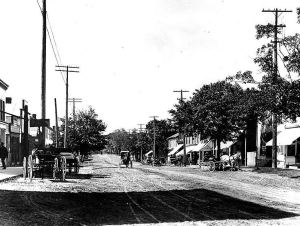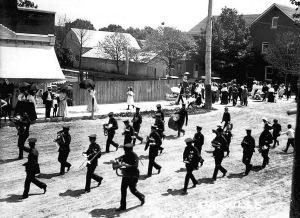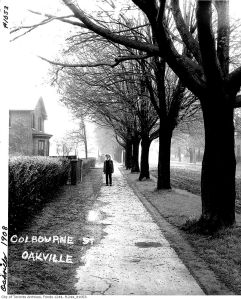There were two vexing questions about big city life. How would residents maintain their connection to the natural and rural worlds?
And, how would farming and small town life be protected from the outward spread of the city?
The flip-side of Toronto’s residential boom was seen in Oakville’s struggle to maintain its identity as an integrated community despite being in the path of commuter subdivision development.
Oakville’s balance between its idealized sense of itself as a friendly main street-focused village and the reality of its continual expansion began during Toronto’s building boom a century ago and continues today.

5.
This identity crisis is echoed in each one of the Greater Toronto Area’s constellation of municipalities. Markham, Brampton and numerous other ex-urbs have turned to New Urbanism for answers. This movement invokes the design vocabulary of the 19th century village to create more human scale and less car-centric environments.
Mixed use spaces, traditional architecture and transit oriented design are the new bywords in the fight against ‘place-less’ development. New Urbanism’s contemporary appeal is fueled by familiarity with such nostalgia-tinted postcards and photographs of village life as those produced by William James.
To read more go to Menu: “Paving the Way to Paradise…” Chapter 1.
images
1. city of toronto archives fonds 1244, 3198 last Toronto snake fence 1910
2. city of toronto archives fonds 1244, 627 Bronte Ont. farm 1907
3. city of toronto archives fonds 1244, 1075 Oakville “express” 1911?
4. city of toronto archives fonds 1244, 1049a Colborne St. Oakville 1908
5. city of toronto archives fonds 1244, 110c Oakville paving #2 hwy 1907
6. city of toronto archives fonds 1244,1051 Calithumpian Society 1909?
7. city of toronto archives fonds 1244, 1053 Oakville 1908






